Second Year of Establishment - 2016
Weather
The summer of 2016 could be described as hot and dry. Data from Brookhaven National Laboratory confirm this description of below average precipitation and above average temperatures. Total rainfall for June, July and August in 2016 was 6.78 inches compared to the historical average of 11.45 inches for these three month. All three months experienced above average temperatures especially August with an average of nearly 5 degrees higher than the historical average. In 2016, the average temperatures for June, July and August compared to the historical averages are as follows: June 77.9 F / 76.96 F; July 84.0 F / 82.11 F and August 85.2 F / 80.85 F.
Spring
From mid-April until mid-June approximately eighty volunteer hours were spent raking thatch off the field to encourage the growth of native vegetation. Although this effort was labor intensive it appeared to be successful judging from the resulting growth of Warm Season Grasses over the summer season.

Thatch and early vegetation in the field at the end of March.

Volunteers raking thatch in mid-April. Thatch consisted of mainly Foxtail cuttings.
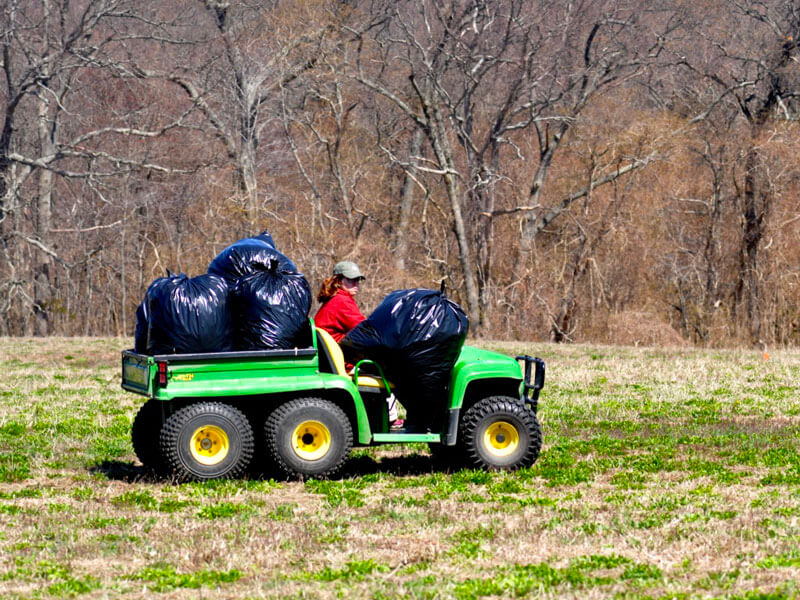
Bags of thatch being transported off of field.
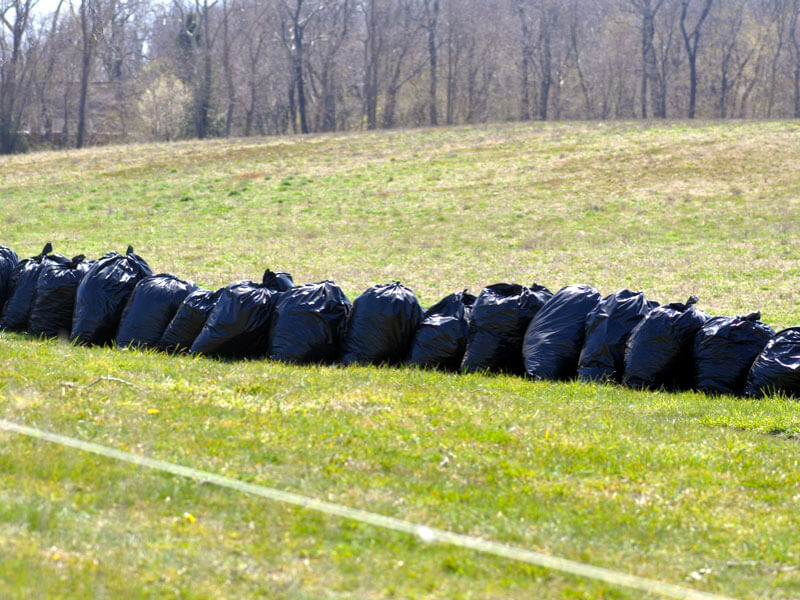
A total of 40 bags of thatched were raked and left to solarize on the field edge.
First Mowing of the Season
On April 26th when the field had greened and grown a few inches it was mowed low to the ground.
Close up view of vegetation growth approximately one month following the first mowing of the field.
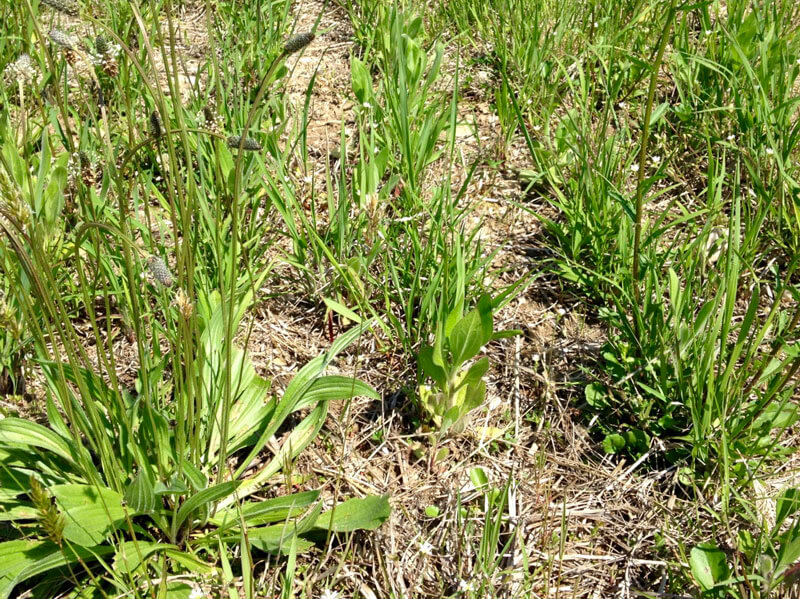
English Plantain can be seen in the foreground.
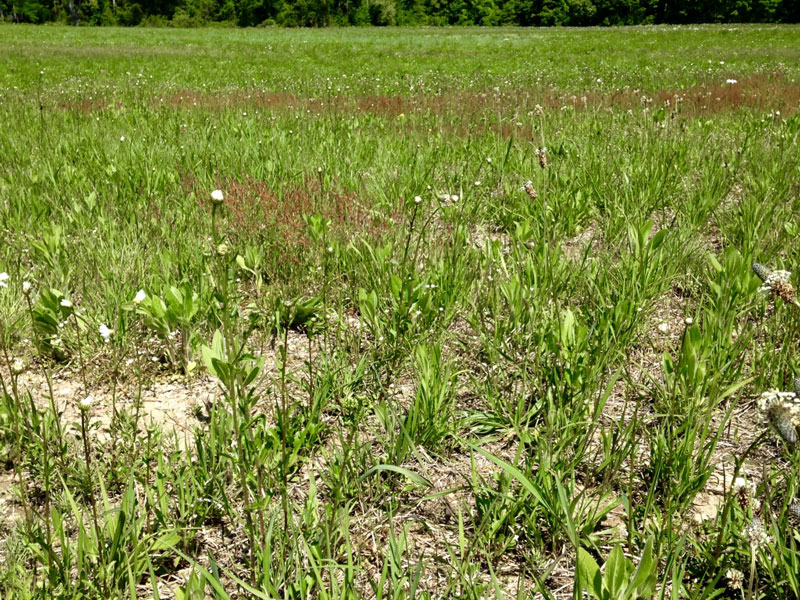
The red near the center of this photo is Sheep Sorrel. Oxeye Daisy foliage and Warm Season Grasses are also present.
The vegetation that grew following this initial cut consisted of a mix of warm and cool season grasses and forbs including Chickweed, Clover, Black-eyed Susan and Butter and Eggs. Other species in smaller amounts were Mugwort, English Plantain, Cow Vetch, Canada Thistle, Sheep Sorrel and Oxeye Daisy. Once this vegetation reached 18 inches it was mowed to a height of 6 inches. This second and final cut occurred on June 6, 2016.

Environmental Intern measures the mowing cut to make sure it is about 6 inches in height.
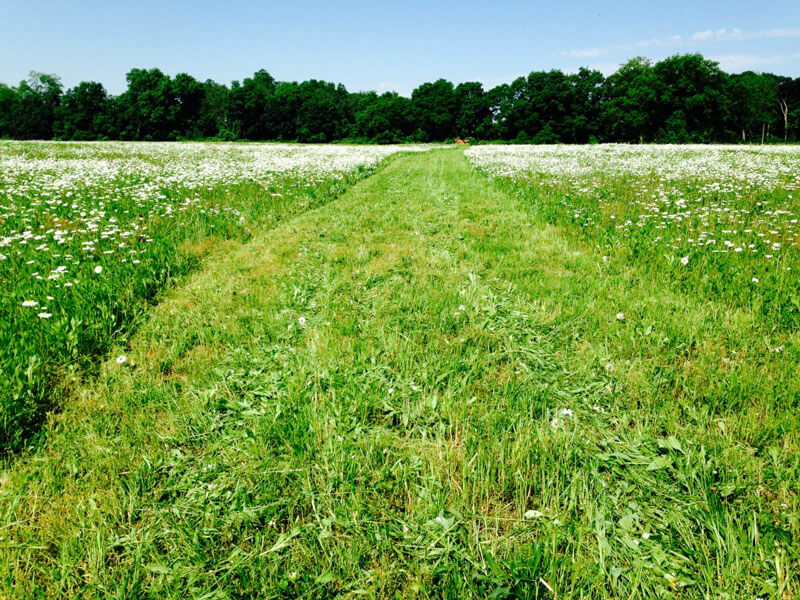
Path left by the mower after the second cutting.
Mile-A-Minute 2015 Infestation Follow-up
The 2015 heavy infestation of Mile-A-Minute (MAM) which was weeded, weed whacked and tarped did not reoccur in 2016 and very few MAM plants were found in the restoration site. The two different tarps that were put down in June of 2015 were removed in September 2015. The clear plastic tarp had less reoccurrence of MAM compared to the area covered by the blue roof tarp. It should be noted however that very little MAM occurred in the tarp areas and in the areas that were heavily weeded and weed whacked. In 2016 a thick cover of Chickweed and Smartweed grew in the soil where the clear tarp had been placed. These plants were weeded and several native plants including New England Aster and NY Aster were planted in these areas in September 2015 and June 2016. Unfortunately the resident Woodchucks dug out most of these plants. In both tarp areas a good deal of compact soil remained un-vegetated through out the summer. Along the edges of the clear tarp the grasses Big Blue Stem and Indiangrass grew well over 6 feet in height creating a noticeable visual row of tall grasses.
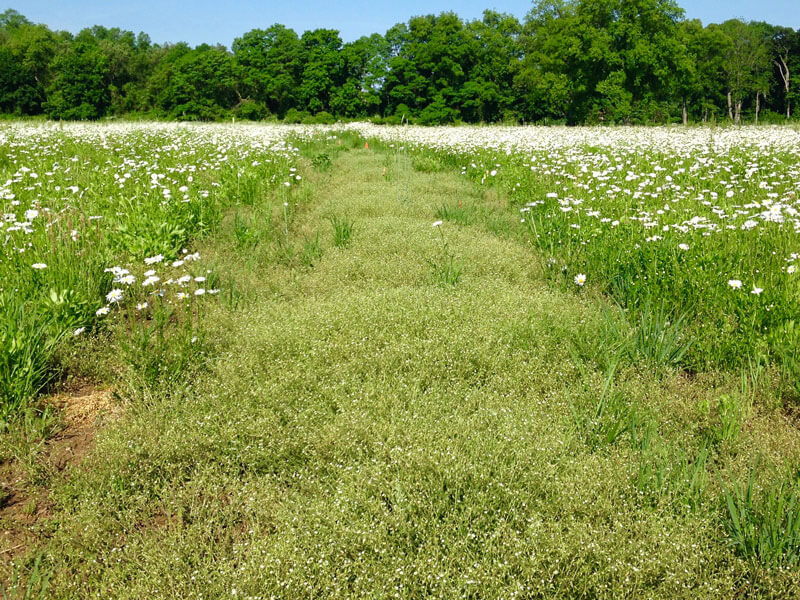
Former clear tarp site vegetated with Chickweed on June 1.

Volunteers removing Chickweed from the formerly tarped area.
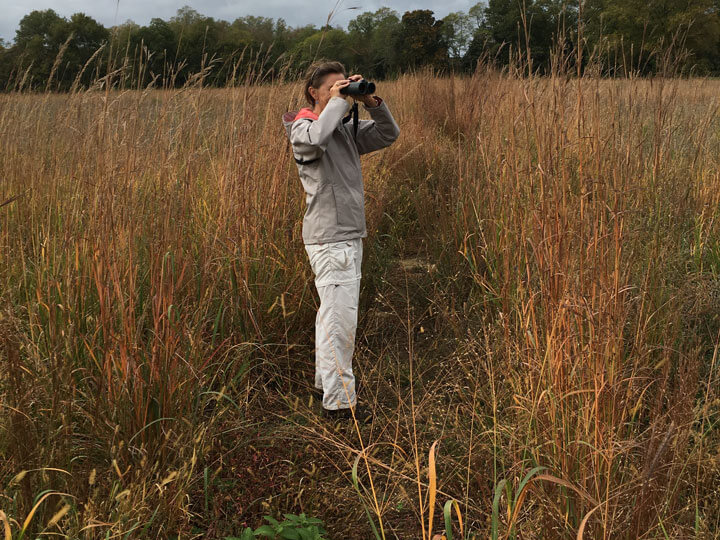
Former clear tarp site in October....

...Notice the tall native grasses on either side of old tarped area.
By mid-June the majority of the field was covered by a mix of herbaceous vegetation including Warm and Cool Season grasses, White, Alsike and Red Clover, Moth Mullein, Common Mullein and Daisy Fleabane. A less diverse composition was present in the northern section of the field in areas that were eroded during the heavy rain of August 2014. In these areas Warm Season Grasses (WSG) which grew within the seed drill tracks were the dominant vegetation. These WSG were not as tall as the WSG in other areas of the field.
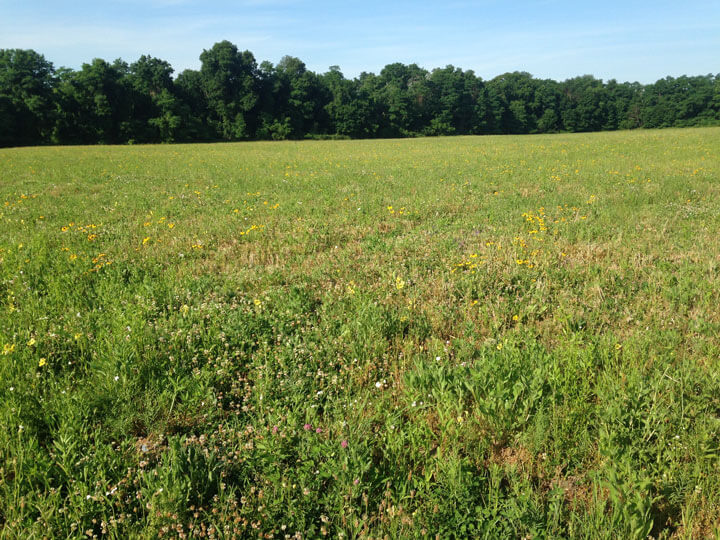
Vegetation cover in mid June.

Warm season grasses in seed drill tracks in northern part of field.
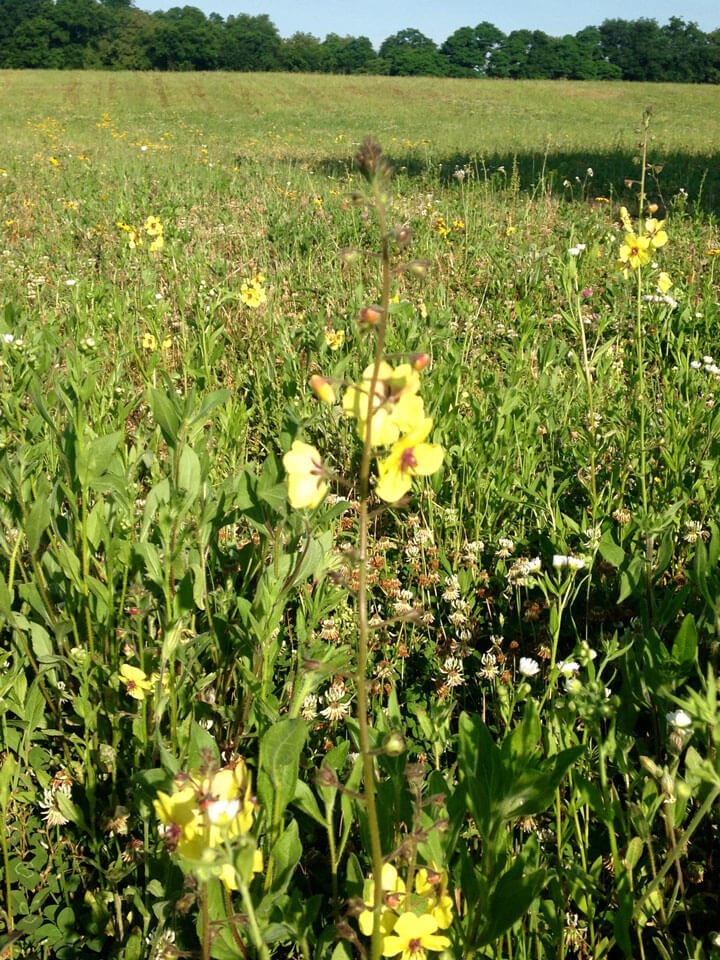
Vegetation including Moth Mullein and Clover during mid June.
SUMMER
The Black-eyed Susans (Rudbeckia hirta) made a spectacular display for almost 3 weeks in July.
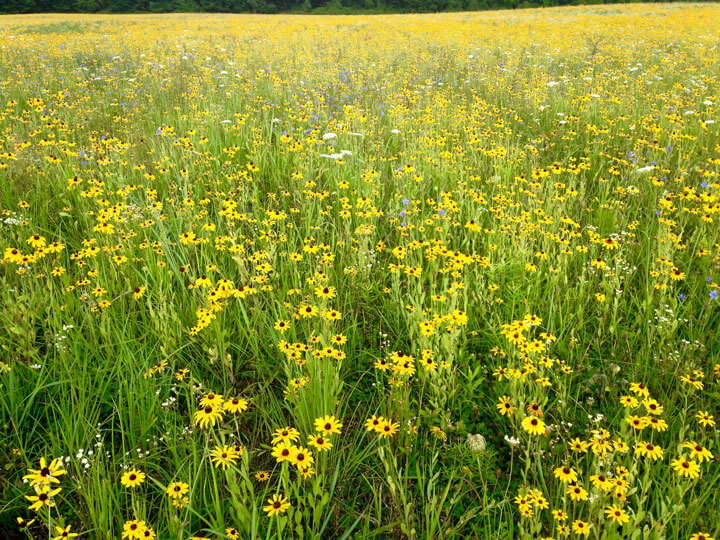
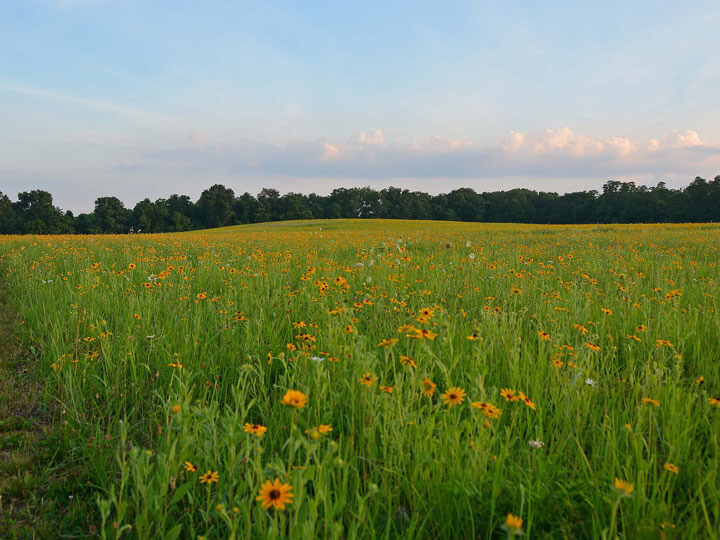
Volunteer efforts focused on removing Curled Dock, Canada Thistle, Foxtail, Stiltgrass and any woody saplings. Removing woodies that make their way from the shrubby wooded edge that surrounds 3 sides of the field will require yearly removal efforts. This season Black Locust saplings reached a height of 12 inches. In addition to removing invasive plants native grasses and flowers were planted in areas that had little to no native vegetation. Any remaining seed from the original native seed mix was spread in open areas
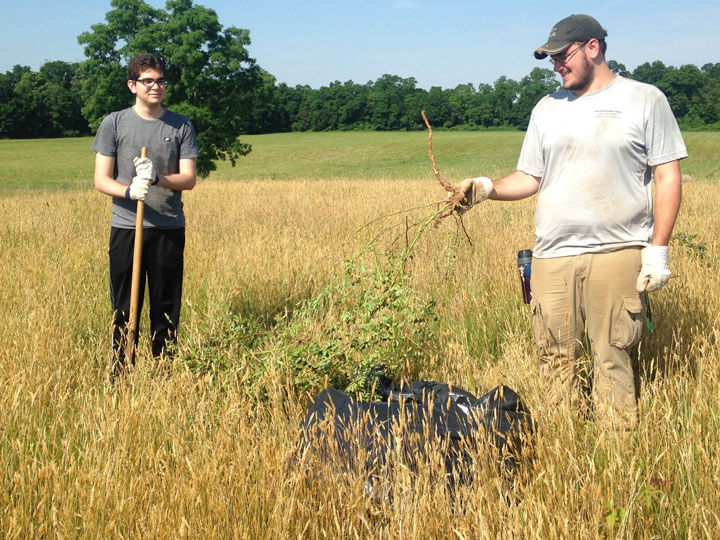
Environmental Intern and volunteer removing woody plants.
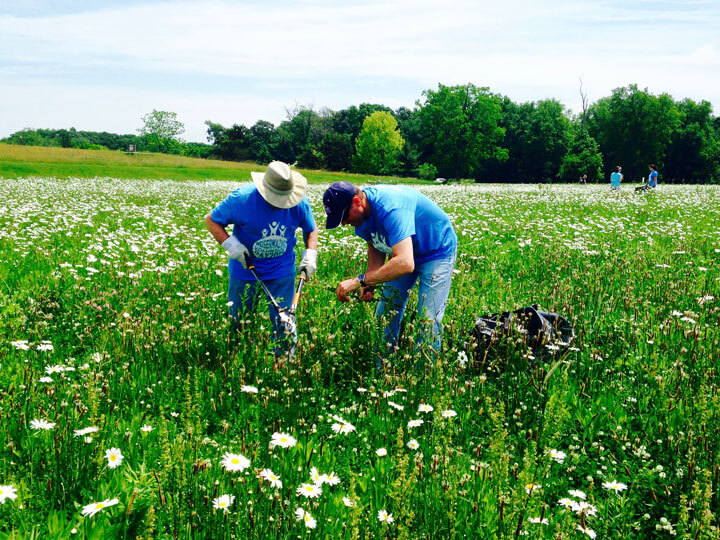
Volunteers cutting Curled Dock seed heads.
AUTUMN
By September the majority of the field was covered by Warm Season Grasses. Indiangrass appeared to dominate most of the field however all four grasses successfully vegetated the site many reaching over 6 feet!

Native grasses along the western perimeter

Looking south over the grassland
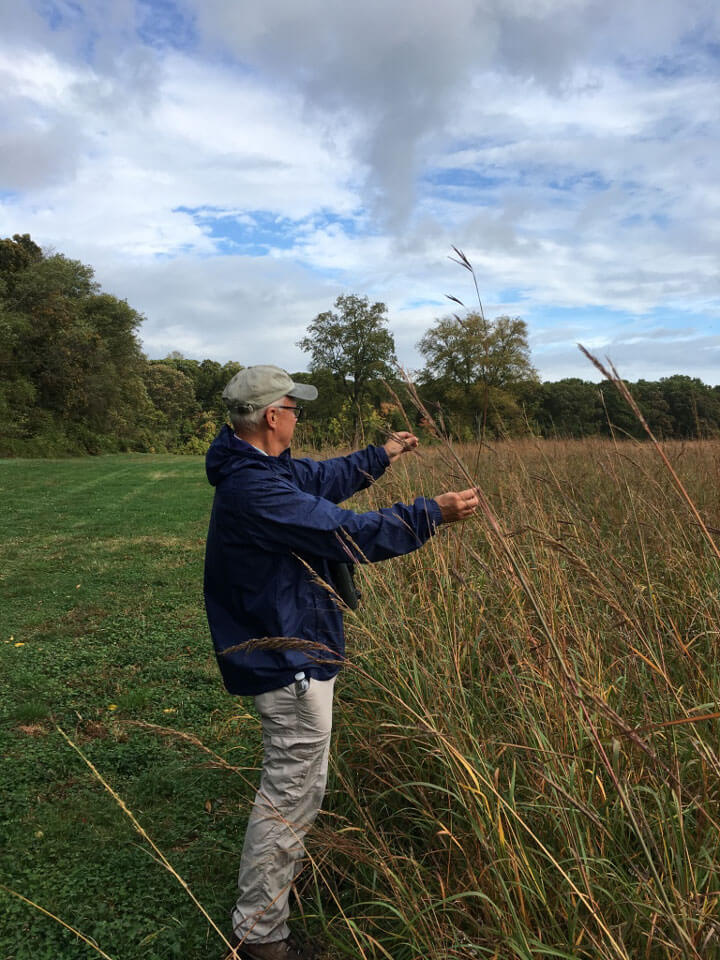
By early fall Big Blue Stem had grown over 5 feet tall.
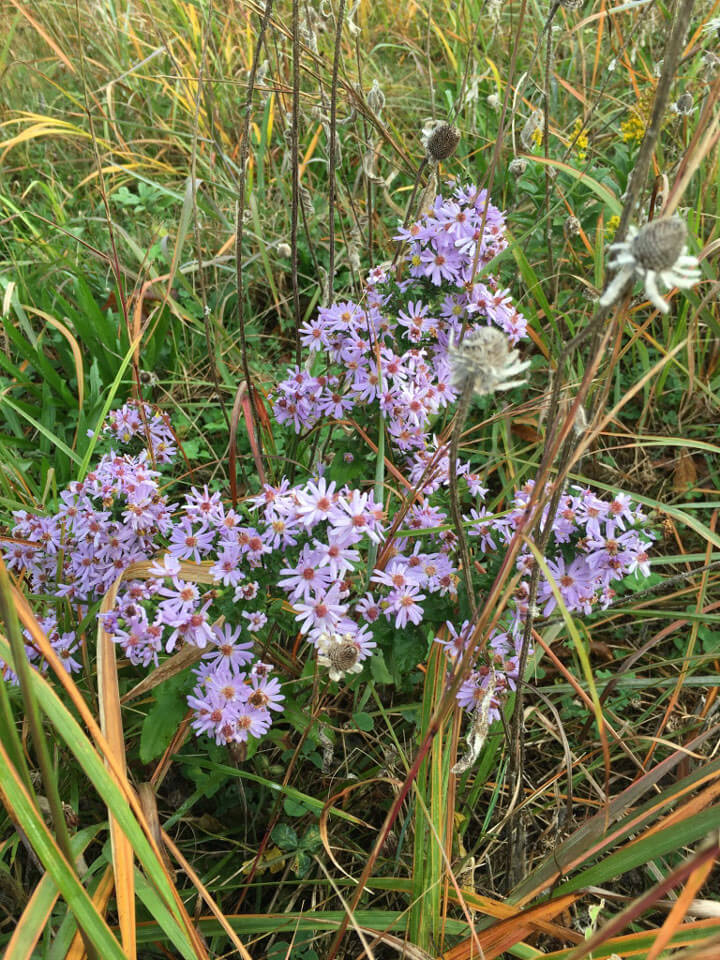
New York Aster
Volunteer efforts to supplement native vegetation.
A 140’ X 40’ section of the field along the western perimeter needed to be supplemented with native grasses. This section was not disked during Phase 3 as a measure to protect the Baltimore Checkerspot butterfly. Although it was seeded with the no-till drill in the spring of 2015, cool season grasses and other non-natives dominated this section. Volunteers planted seventy native grasses and ten New York Asters in this area on October 15, 2016.
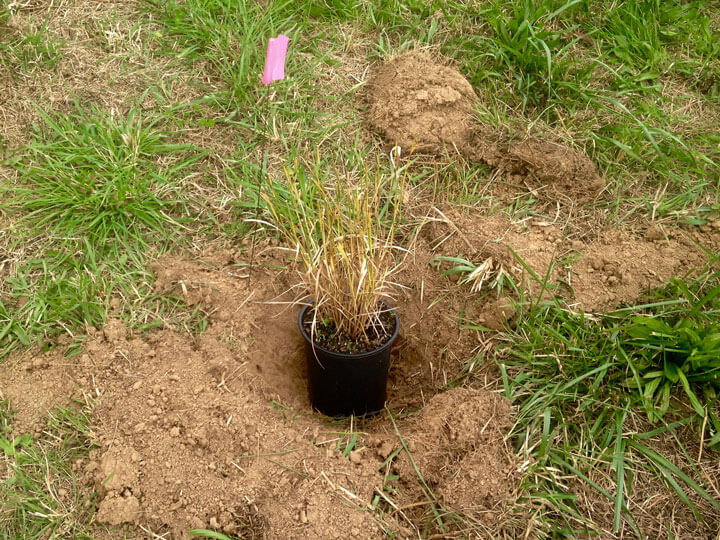
Little Blue Stem grass planted in this area.
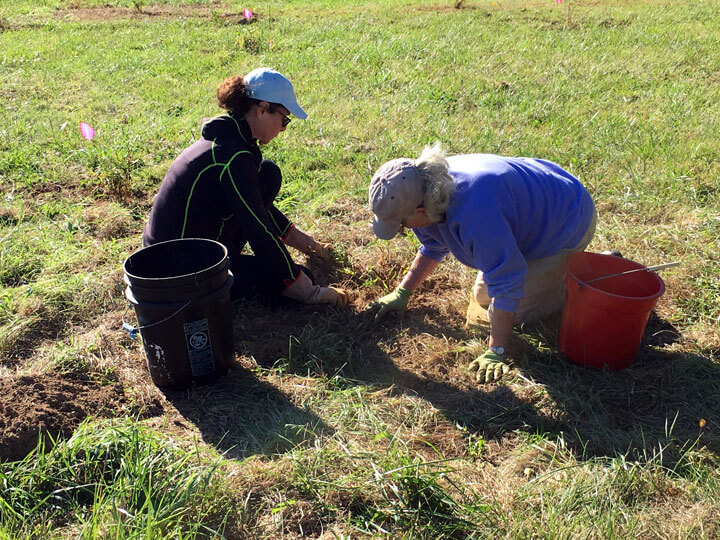
Volunteers planting native grasses along western perimeter of field in October.

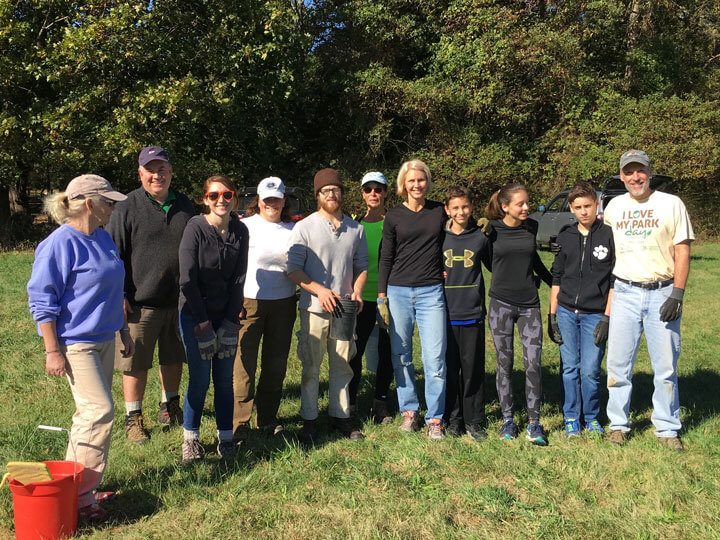
Migratory grassland birds observed in the fall included Northern Harrier, Bobolink, Savannah Sparrow and Eastern Meadowlark. Bird observations for this site were submitted to Cornell’s e-bird data entry system.
Volunteers worked to further supplement this area by harvesting and transplanting native grasses on November 7 and 19, 2016. Stems containing the seed heads of Indiangrass and Big Bluestem were cut from the restoration site and then placed directly on the ground to encourage the establishment of native grasses. To build a natural barrier against invasive seeds from the nearby hedgerow from entering the field volunteers dug out a total of 50 Indiangrass and Big Bluestem from the restoration field and planted these grasses along the western edge of this area.
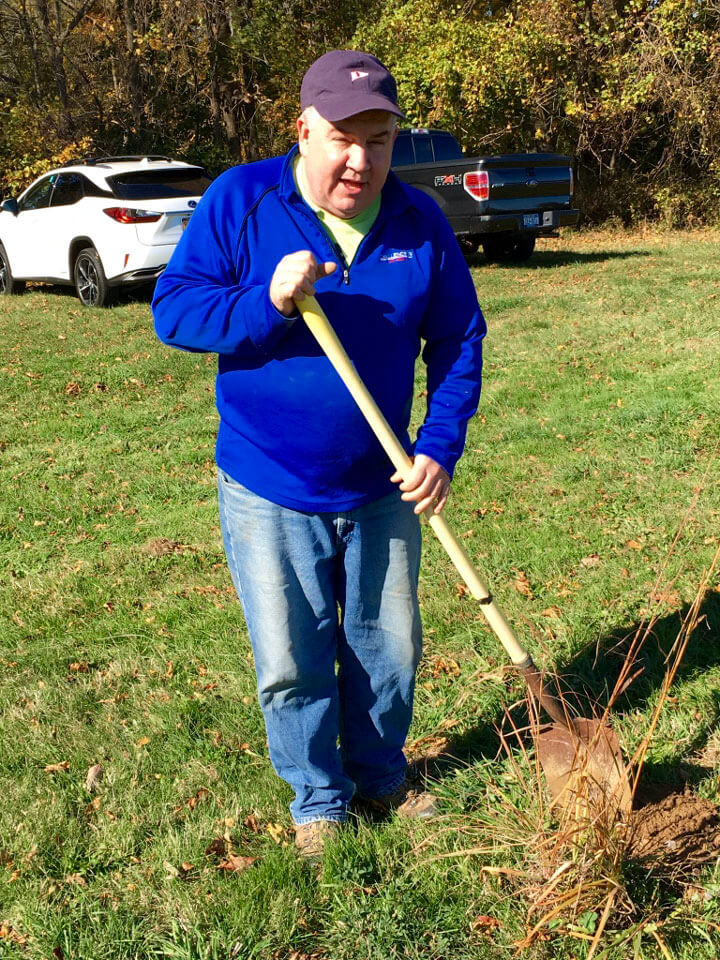
Volunteer planting grasses along western edge to buffer against invasive seeds.

Another volunteer planting grasses along western edge to buffer against invasive seeds.
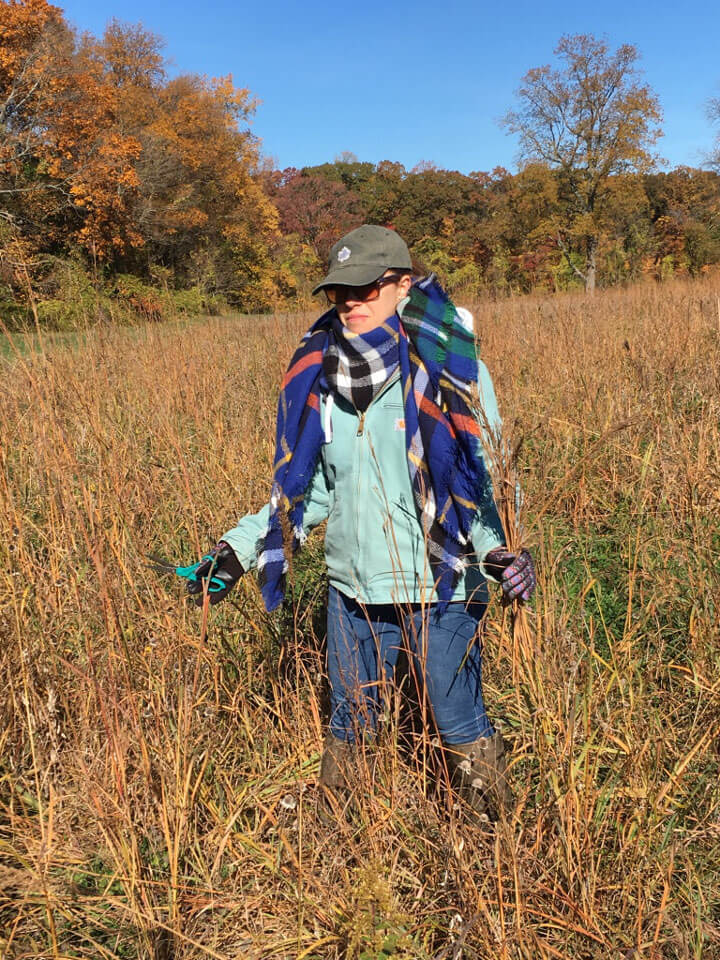
Volunteer gathering grass stalks from restoration field.
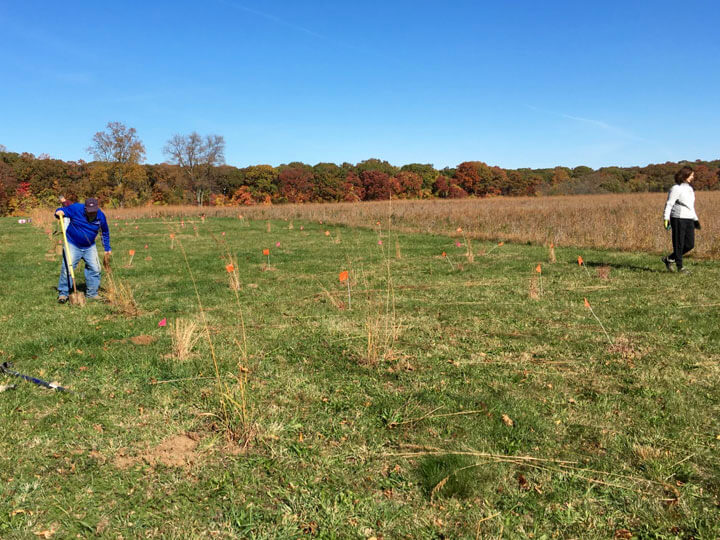
Looking north at the 140’ X 40’ site.

Volunteer distributing the grass stalks within the area.

Volunteer holding native grass stalks with seed heads.
Grassland Restoration Project Phases
- Project Overview
- Phase 1 - September through November 2011
- Phase "1.5" - Summer 2012
- Phase 2 - December 2012 through September 2013
- Phase 3 - March 2014 through Spring 2015
- Second Year of Establishment 2016
- Third Year of Establishment 2017
- Fourth Year of Establishment 2018
- Aerial Photos of Field
- Grassland Management Plan
